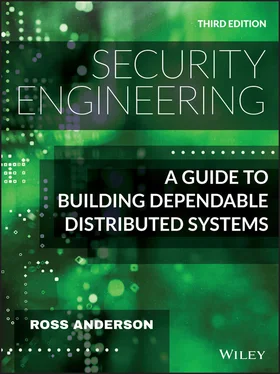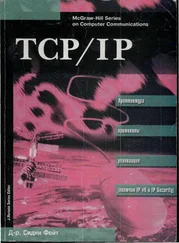3.3.1 The salesman and the scamster
Deception is the twin brother of marketing, so one starting point is the huge literature about sales techniques. One eminent writer is Robert Cialdini, a psychology professor who took summer jobs selling everything from used cars to home improvements and life insurance in order to document the tricks of the trade. His book ‘Influence: Science and Practice’ is widely read by sales professionals and describes six main classes of technique used to influence people and close a sale [426].
These are:
1 Reciprocity: most people feel the need to return favours;
2 Commitment and consistency: people suffer cognitive dissonance if they feel they're being inconsistent;
3 Social proof: most people want the approval of others. This means following others in a group of which they're a member, and the smaller the group the stronger the pressure;
4 Liking: most people want to do what a good-looking or otherwise likeable person asks;
5 Authority: most people are deferential to authority figures (recall the Milgram study mentioned above);
6 Scarcity: we're afraid of missing out, if something we might want could suddenly be unavailable.
All of these are psychological phenomena that are the subject of continuing research. They are also traceable to pressures in our ancestral evolutionary environment, where food scarcity was a real threat, strangers could be dangerous and group solidarity against them (and in the provision of food and shelter) was vital. All are used repeatedly in the advertising and other messages we encounter constantly.
Frank Stajano and Paul Wilson built on this foundation to analyse the principles behind scams. Wilson researched and appeared in nine seasons of TV programs on the most common scams – ‘The Real Hustle’ – where the scams would be perpetrated on unsuspecting members of the public, who would then be given their money back, debriefed and asked permission for video footage to be used on TV. The know-how from experimenting with several hundred frauds on thousands of marks over several years was distilled into the following seven principles [1823].
1 Distraction – the fraudster gets the mark to concentrate on the wrong thing. This is at the heart of most magic performances.
2 Social compliance – society trains us not to question people who seem to have authority, leaving people vulnerable to conmen who pretend to be from their bank or from the police.
3 The herd principle – people let their guard down when everyone around them appears to share the same risks. This is a mainstay of the three-card trick, and a growing number of scams on social networks.
4 Dishonesty – if the mark is doing something dodgy, they're less likely to complain. Many are attracted by the idea that ‘you're getting a good deal because it's illegal’, and whole scam families – such as the resale of fraudulently obtained plane tickets – turn on this.
5 Kindness – this is the flip side of dishonesty, and an adaptation of Cialdini's principle of reciprocity. Many social engineering scams rely on the victims' helpfulness, from tailgating into a building to phoning up with a sob story to ask for a password reset.
6 Need and greed – sales trainers tell us we should find what someone really wants and then show them how to get it. A good fraudster can help the mark dream a dream and use this to milk them.
7 Time pressure – this causes people to act viscerally rather than stopping to think. Normal marketers use this all the time (‘only 2 seats left at this price’); so do crooks.
The relationship with Cialdini's principles should be obvious. A cynic might say that fraud is just a subdivision of marketing; or perhaps that, as marketing becomes ever more aggressive, it comes to look ever more like fraud. When we investigated online accommodation scams we found it hard to code detectors, since many real estate agents use the same techniques. In fact, the fraudsters' behaviour was already well described by Cialdini's model, except the scamsters added appeals to sympathy, arguments to establish their own credibility, and ways of dealing with objections [2065]. (These are also found elsewhere in the regular marketing literature.)
Oh, and we find the same in software, where there's a blurry dividing line between illegal malware and just-about-legal ‘Potentially Unwanted Programs’ (PUPs) such as browser plugins that replace your ads with different ones. One good distinguisher seems to be technical: malware is distributed by many small botnets because of the risk of arrest, while PUPs are mostly distributed by one large network [956]. But crooks use regular marketing channels too: Ben Edelman found in 2006 that while 2.73% of companies ranked top in a web search were bad, 4.44% of companies that appeared alongside in the search ads were bad [612]. Bad companies were also more likely to exhibit cheap trust signals, such as TRUSTe privacy certificates on their websites. Similarly, bogus landlords often send reference letters or even copies of their ID to prospective tenants, something that genuine landlords never do.
And then there are the deceptive marketing practices of ‘legal’ businesses. To take just one of many studies, a 2019 crawl of 11K shopping websites by Arunesh Mathur and colleagues found 1,818 instances of ‘dark patterns’ – manipulative marketing practices such as hidden subscriptions, hidden costs, pressure selling, sneak-into-basket tactics and forced account opening. Of these at least 183 were clearly deceptive [1244]. What's more, the bad websites were among the most popular; perhaps a quarter to a third of websites you visit, weighted by traffic, try to hustle you. This constant pressure from scams that lie just short of the threshold for a fraud prosecution has a chilling effect on trust generally. People are less likely to believe security warnings if they are mixed with marketing, or smack of marketing in any way. And we even see some loss of trust in software updates; people say in surveys that they're less likely to apply a security-plus-features upgrade than a security patch, though the field data on upgrades don't (yet) show any difference [1594].
Hacking systems through the people who operate them is not new. Military and intelligence organisations have always targeted each other's staff; most of the intelligence successes of the old Soviet Union were of this kind [119]. Private investigation agencies have not been far behind.
Investigative journalists, private detectives and fraudsters developed the false-pretext phone call into something between an industrial process and an art form in the latter half of the 20th century. An example of the industrial process was how private detectives tracked people in Britain. Given that the country has a National Health Service with which everyone's registered, the trick was to phone up someone with access to the administrative systems in the area you thought the target was, pretend to be someone else in the health service, and ask. Colleagues of mine did an experiment in England in 1996 where they trained the staff at a local health authority to identify and report such calls 1. They detected about 30 false-pretext calls a week, which would scale to 6000 a week or 300,000 a year for the whole of Britain. That eventually got sort-of fixed but it took over a decade. The real fix wasn't the enforcement of privacy law, but that administrators simply stopped answering the phone.
Another old scam from the 20th century is to steal someone's ATM card and then phone them up pretending to be from the bank asking whether their card's been stolen. On hearing that it has, the conman says ‘We thought so. Please just tell me your PIN now so I can go into the system and cancel your card.’ The most rapidly growing recent variety is the ‘authorised push payment’, where the conman again pretends to be from the bank, and persuades the customer to make a transfer to another account, typically by confusing the customer about the bank's authentication procedures, which most customers find rather mysterious anyway 2.
Читать дальше











